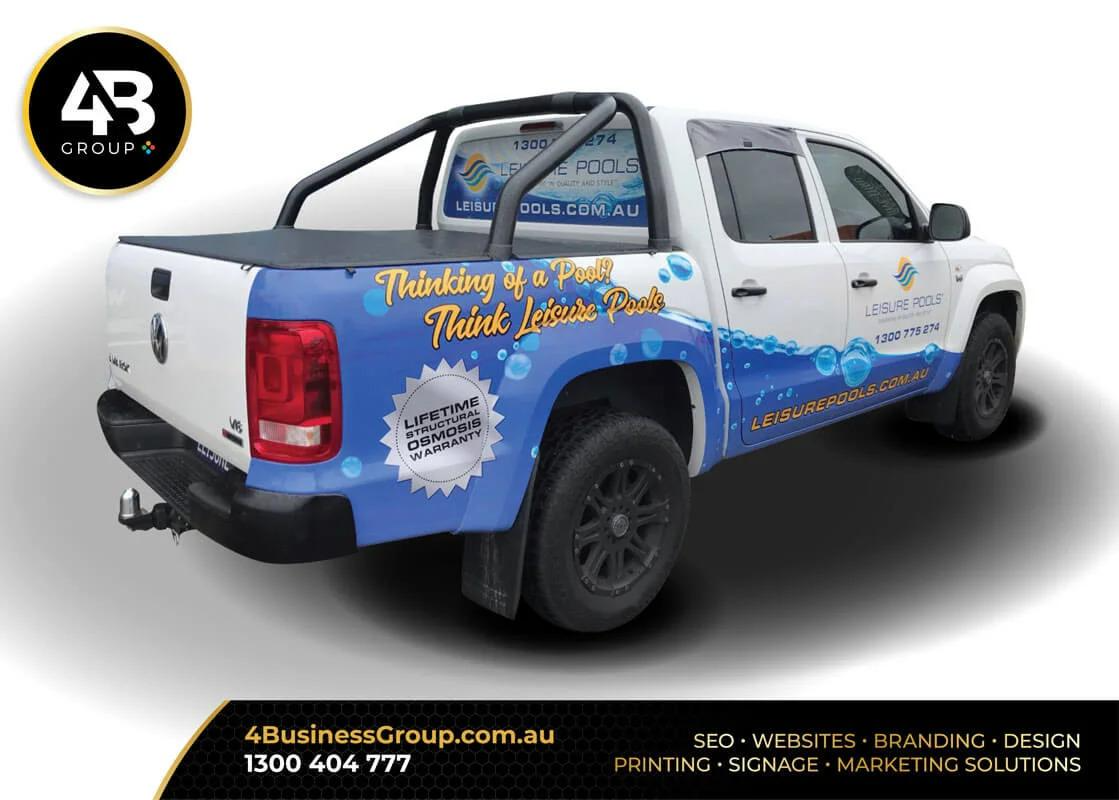
96% of people say vehicle wraps are more impactful than traditional ads. But a low-quality vehicle wrap can backfire—peeling, bubbling, or fading instead of promoting your brand. Worse, it might even damage your paint and waste your money.
To avoid getting a low-quality vehicle wrap, here’s how you can spot the signs early, before it’s too late.
Let’s go over how to spot the problems early, before it’s too late, with precise symptoms and steps.
To find out if your vehicle signage is of low quality, go through the following steps. These will help you avoid a low-quality vehicle wrap before it’s too late.
One of the biggest signs of a low-quality vehicle wrap is vinyl bubbling. These bubbles look like air pockets under the wrap on your vehicle’s surfaces. They often show up within days.
Creased edges are another red flag. The vinyl should sit flat, smooth, and even. Creases mean the wrap wasn’t applied carefully. Or worse, your wrap installer used the wrong tools.
Corners are tricky. That’s why poor wrap jobs often fail there first.
Watch for:
If the vinyl is lifting, it means the glue isn’t holding your wraps well. That could be due to low-tack vinyl, skipped steps, or just bad workmanship.
Not all vinyl is the same. There are two main types: cast vinyl and calendar vinyl.
When you compare calendar vs cast vinyl, cast vinyl is stronger. It lasts longer and fits better around curves. Calendar vinyl is cheaper, but it cracks and shrinks faster.
Tests show cast vinyl lasts up to 7–10 years, while calendar vinyl starts to fail after 1–3 years, depending on exposure.
If someone’s offering a wrap for a surprisingly low price, they might be using calendar vinyl. Ask what kind they’re using. If they avoid the question, that’s not a good sign.
Ever seen a wrap that looks dull or faded after a few months? That’s usually poor material or bad ink.
Colour fading can happen fast in the Australian sun, especially if there’s no UV protection. Good wraps should include UV resistance to block the damage.
Vinyl without UV laminate loses colour vibrancy very fast under harsh sun exposure.
Also, check if the design looks stretched or blurry. Graphic distortion is common when there is overstretched vinyl or when it is printed incorrectly.
Good wraps don’t stick to dirty surfaces. That’s why poor surface prep is such a big deal.
Before applying vinyl, the surface must be:
If the surface prep isn’t done right, expect adhesive failure within weeks.
Heat is a big part of wrap installation. But it must be done right.
Bad installers might:
The post-heating process helps the vinyl stay in place. If your vehicle wrapper does it incorrectly or skips it, this can lift or peel the wrap.
A good wrap should look like one smooth piece. If you see lots of visible seams, that’s not ideal.
Sometimes seams are needed, but they should be hidden or minimal. If they’re out in the open or don’t match up, it’s a sign the installer didn’t plan the layout correctly, which results in low-quality vehicle wrap.
The best way to avoid a low-quality vehicle wrap is to see what the installer has done before.
Ask them for:
Professionals follow rules. They don’t skip steps or cut corners.
Professional installation standards include:
Cheap wrap jobs often miss most of these. And you’ll pay for it later.
To avoid a low-quality vehicle wrap, choosing a professional matters. A low-quality vehicle wrap might save you money at first, but you’ll pay more when it fades, peels, or damages your car.
At Signage 4Business Group, they use UV-resistant materials, prep every surface properly, and follow best practices every time. Whether you need custom signage design, vehicle wraps, or full signage installation, you can trust them to make sure your wrap lasts and your brand stands out.